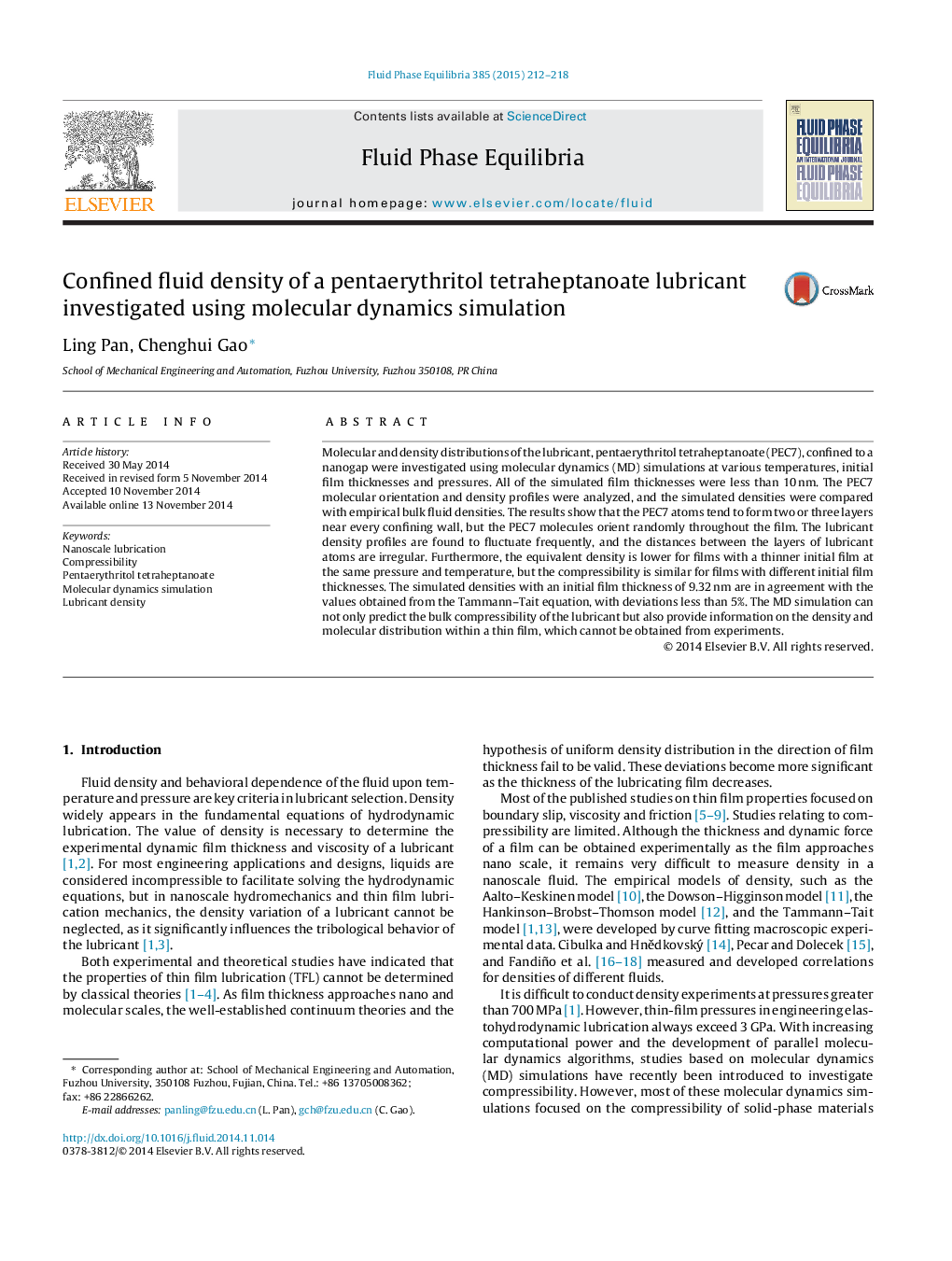| Article ID | Journal | Published Year | Pages | File Type |
|---|---|---|---|---|
| 201790 | Fluid Phase Equilibria | 2015 | 7 Pages |
•Molecular and density distributions of a confined PEC7 lubricant were investigated.•The equivalent density is lower for films with a thinner initial film.•The compressibility is similar for films with different initial film thicknesses.•MD models with film thickness thicker than 9 nm can be used to predict bulk density.•The distances between the layers of lubricant atoms are irregular.
Molecular and density distributions of the lubricant, pentaerythritol tetraheptanoate (PEC7), confined to a nanogap were investigated using molecular dynamics (MD) simulations at various temperatures, initial film thicknesses and pressures. All of the simulated film thicknesses were less than 10 nm. The PEC7 molecular orientation and density profiles were analyzed, and the simulated densities were compared with empirical bulk fluid densities. The results show that the PEC7 atoms tend to form two or three layers near every confining wall, but the PEC7 molecules orient randomly throughout the film. The lubricant density profiles are found to fluctuate frequently, and the distances between the layers of lubricant atoms are irregular. Furthermore, the equivalent density is lower for films with a thinner initial film at the same pressure and temperature, but the compressibility is similar for films with different initial film thicknesses. The simulated densities with an initial film thickness of 9.32 nm are in agreement with the values obtained from the Tammann–Tait equation, with deviations less than 5%. The MD simulation can not only predict the bulk compressibility of the lubricant but also provide information on the density and molecular distribution within a thin film, which cannot be obtained from experiments.
